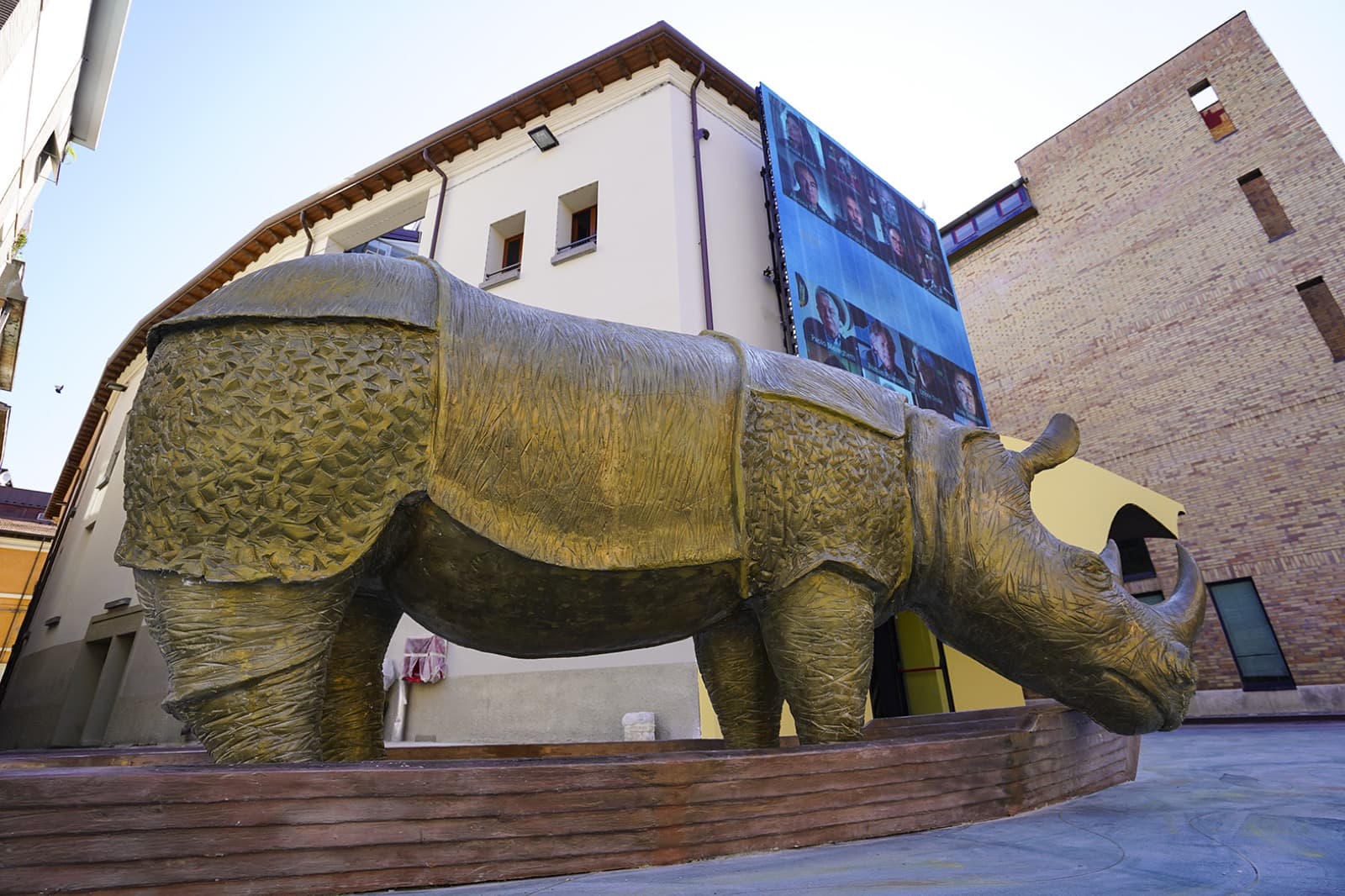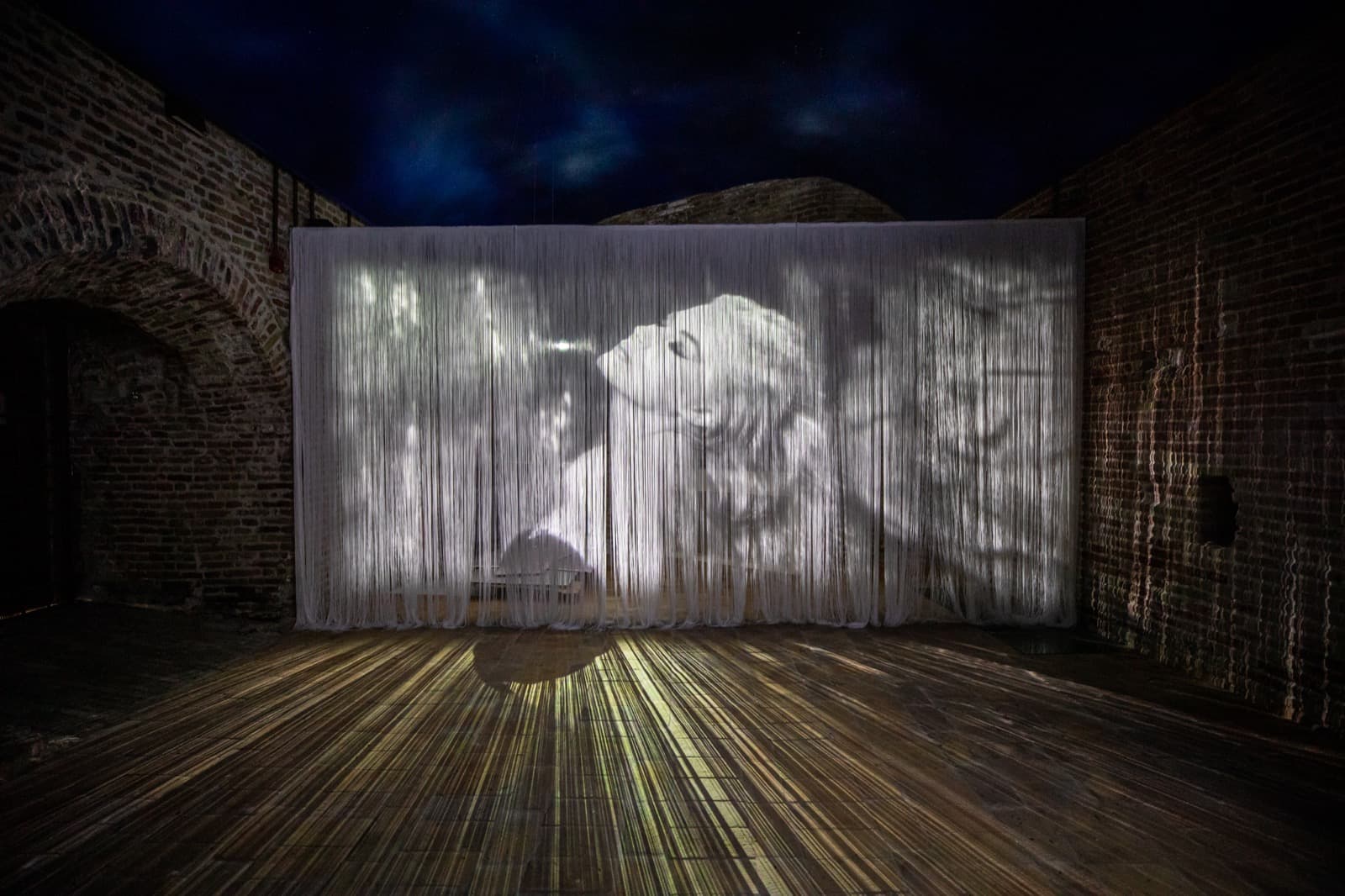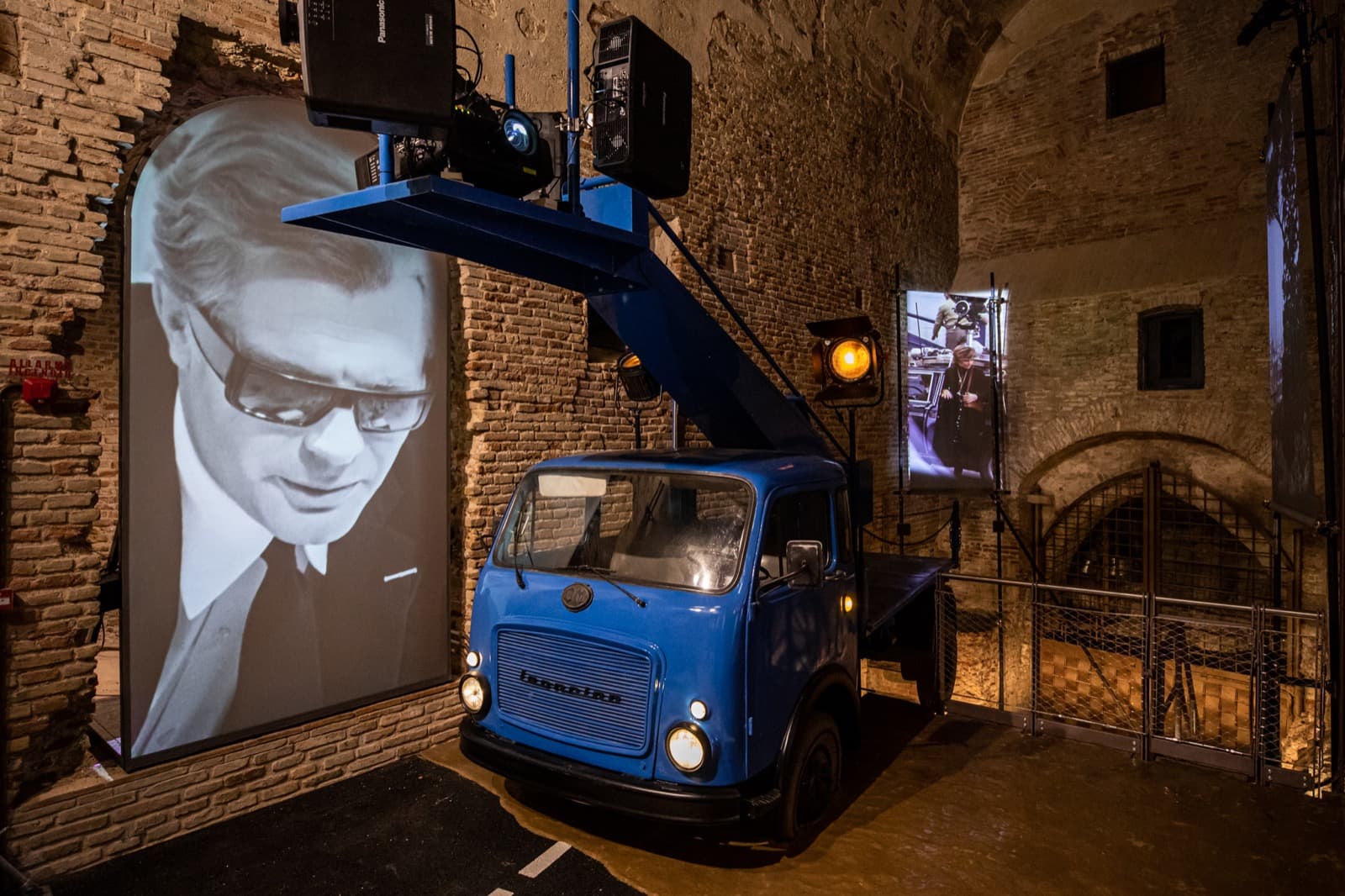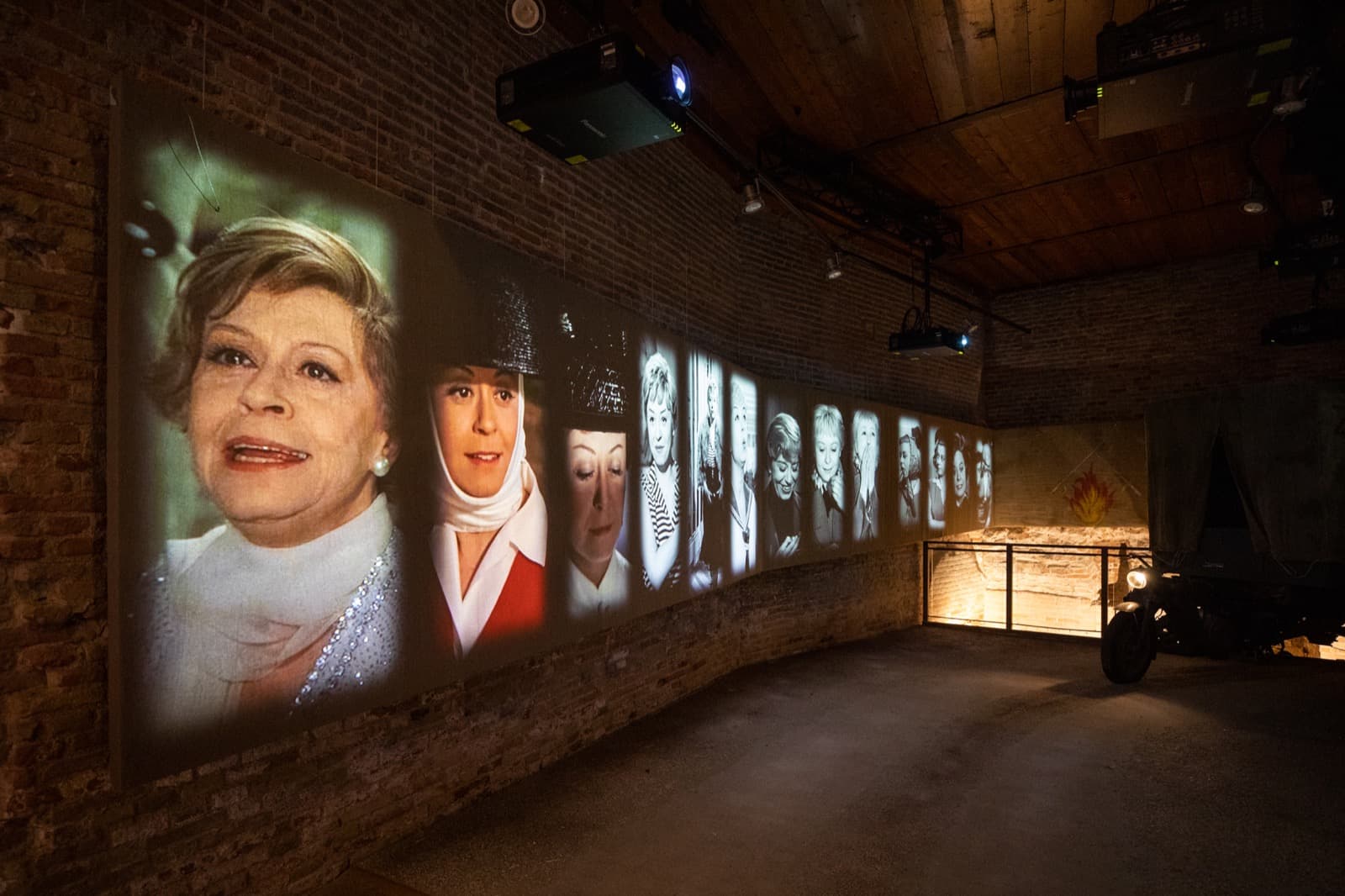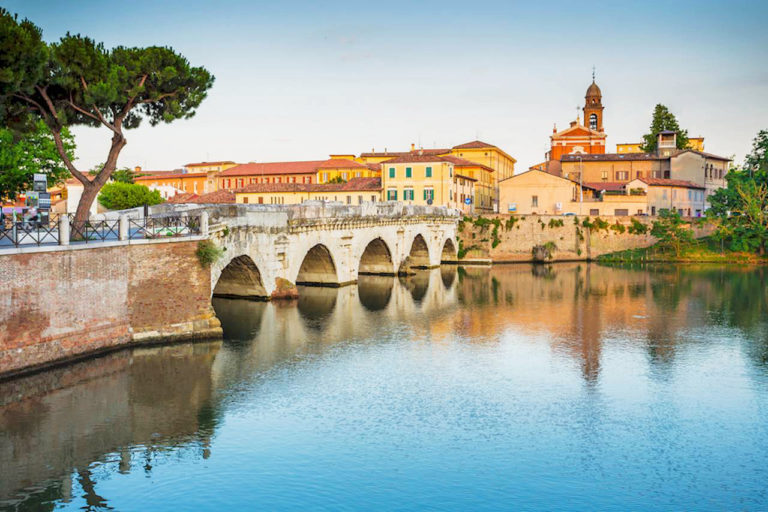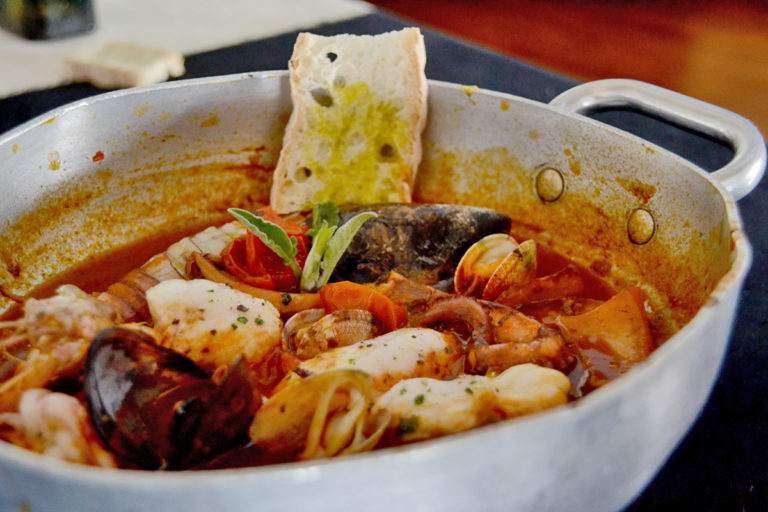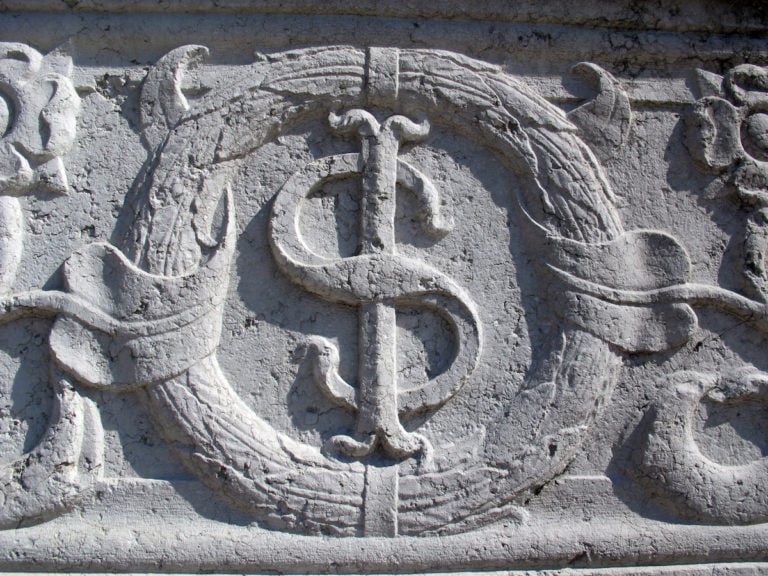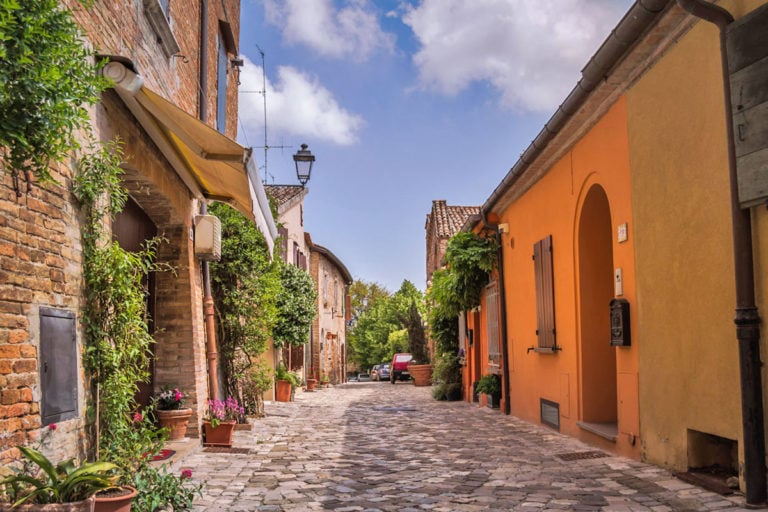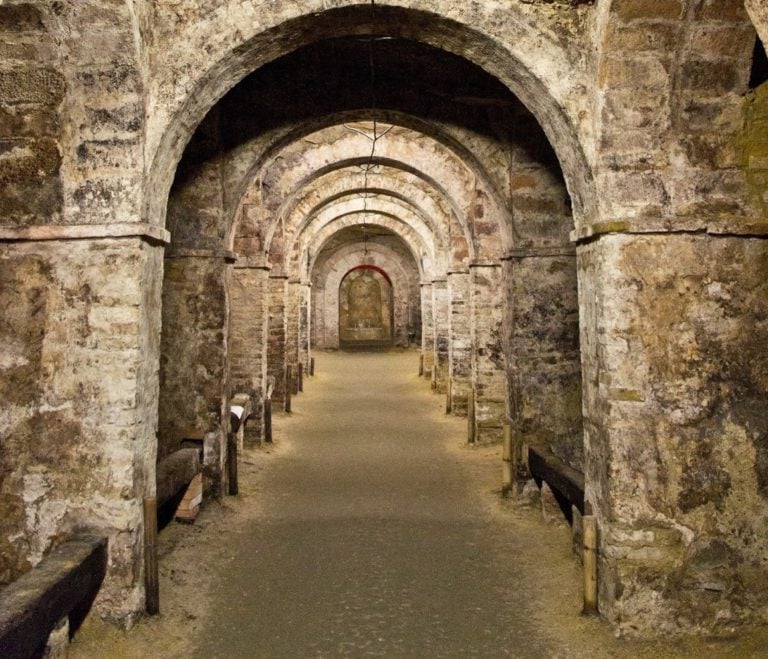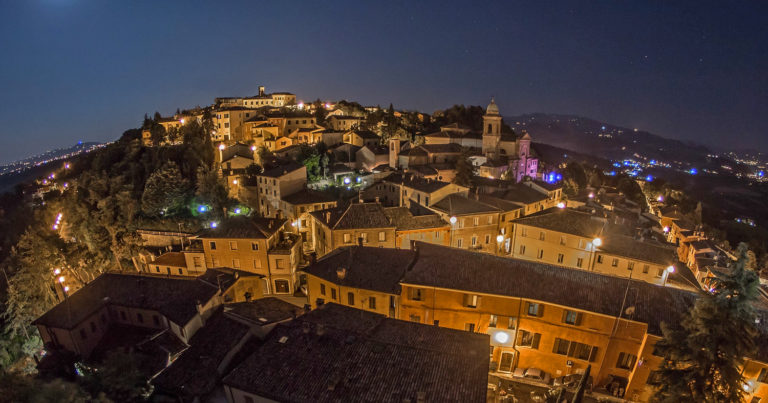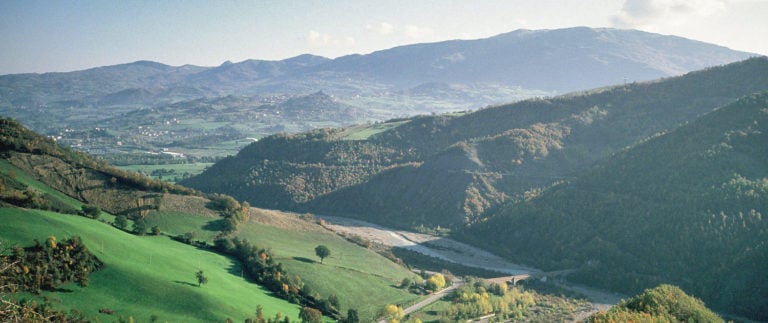Are you looking for places and activities to do with the whole family in Rimini area?
Here is a 2-day itinerary to experience the area in a child-friendly way.
DAY 1 – Rimini
It is well known that Rimini is the capital of summer fun, even for families.
Not only do its equipped beaches offer all the useful services for those traveling with children and teenagers, but the numerous amusement parks (Italia in Miniatura, Fiabilandia, Oltremare, Aquafan and Cattolica Aquarium) that arise in its vicinity are able to leave indelible memories of adventures and new discoveries.
However, today we want to take you to discover a lesser-known side of the city, which boasts an interesting historic center, full of perfectly preserved monuments and glimpses capable of capturing the imagination of the little ones.
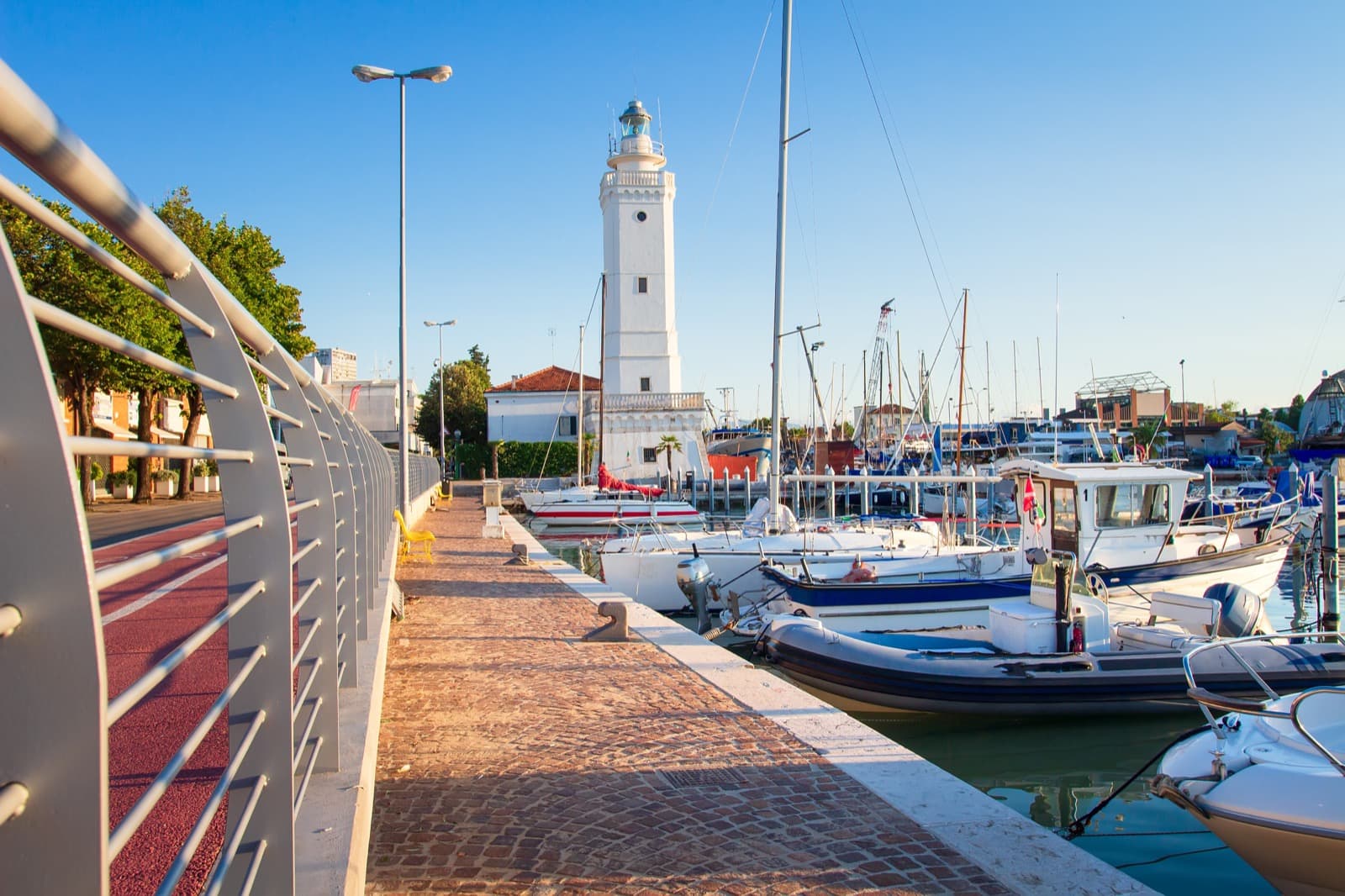
The itinerary starts with a bike tour (find out where to rent bikes in Rimini) that leads from the seafront towards the city center: you start by taking Line1 of the Bicipolitana, which moves along the Parco del Mare, until you reach the port of Rimini; then go up along the Canal Port, meeting the Lighthouse and continuing up to the spectacular Tiberius Bridge and the Piazza sull’Acqua, to reach the picturesque Borgo San Giuliano.
Here a stop is a must: Borgo San Giuliano is the oldest village in Rimini; born around the year 1000 as a fishermen’s quarter, it’s today a symbol of the city.
Strolling through its alleys and squares, immersing yourself in the colorful houses and murals that adorn the walls, allows you to breathe in the poetic atmosphere of this village, which was one of Fellini’s most loved places in Rimini.
Here there are countless “games” that can be invented to visit the village with the little ones: who sees more houses of a given color, who sees the next mural first, etc.
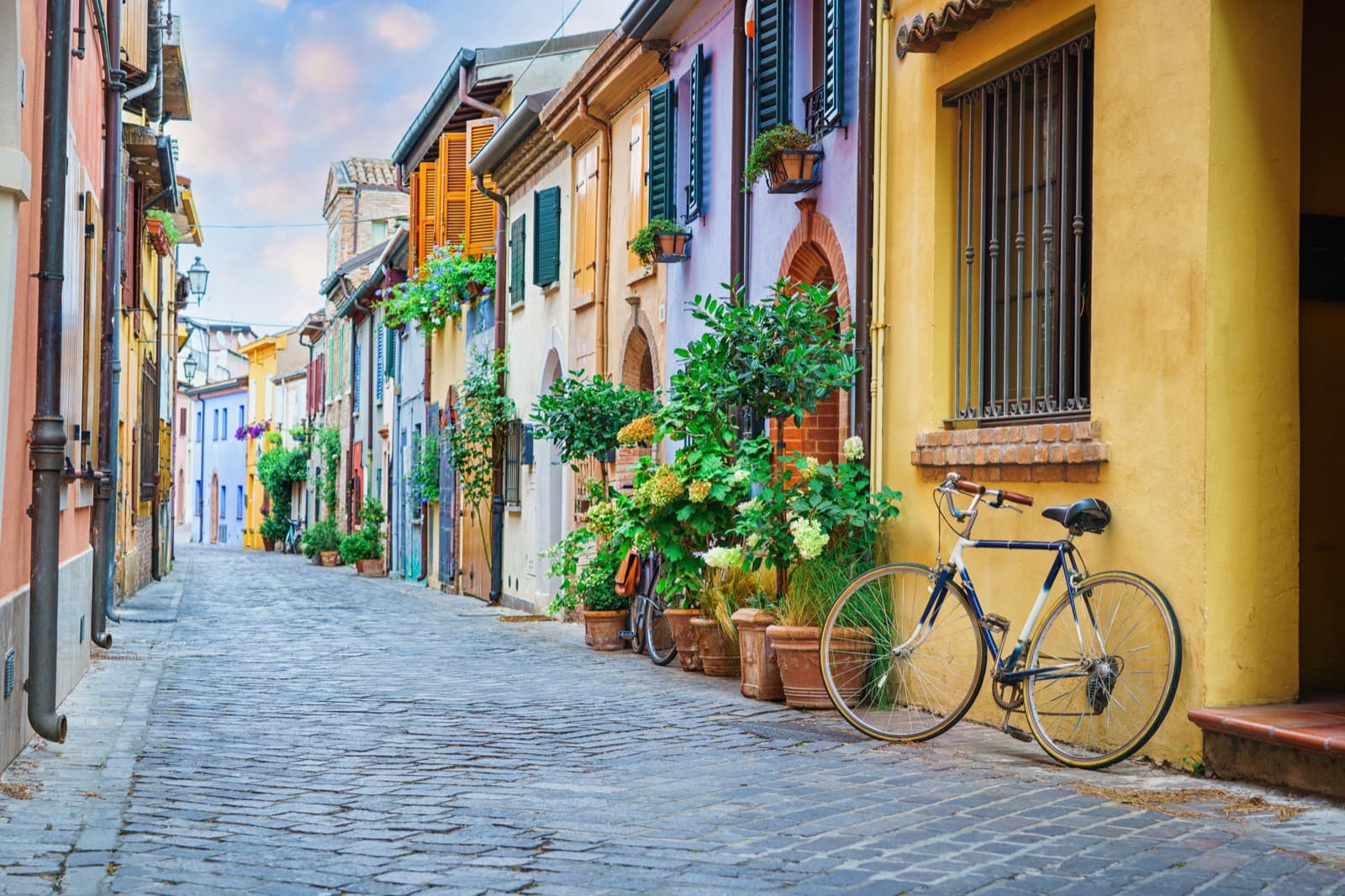
From Borgo San Giuliano you can choose whether to continue by bike along the Green Ring of the Bicipolitana – which leads through the Giovanni Paolo II Park alongside a lake inhabited by ducks and swans and reaches the ancient Arch of Augustus – or whether to recross the Tiberius Bridge to arrive in a few rides in the heart of Rimini, Piazza Cavour.
In Piazza Cavour, the curiosity of the little ones can be captured by the central fountain, famous as Fontana della Pigna (Pine-Cone Fountain), whose water games enchanted even Leonardo da Vinci, and by the imposing and at the same time welcoming architecture of the Vecchia Pescheria (Old Fish Market).
Piazza Cavour is also overlooked by some of Rimini’s most historic buildings: Palazzo dell’Arengo and Palazzo del Podestà, which today house the PART (Rimini’s Museum of Modern and Contemporary Art), and the Galli municipal Theatre.
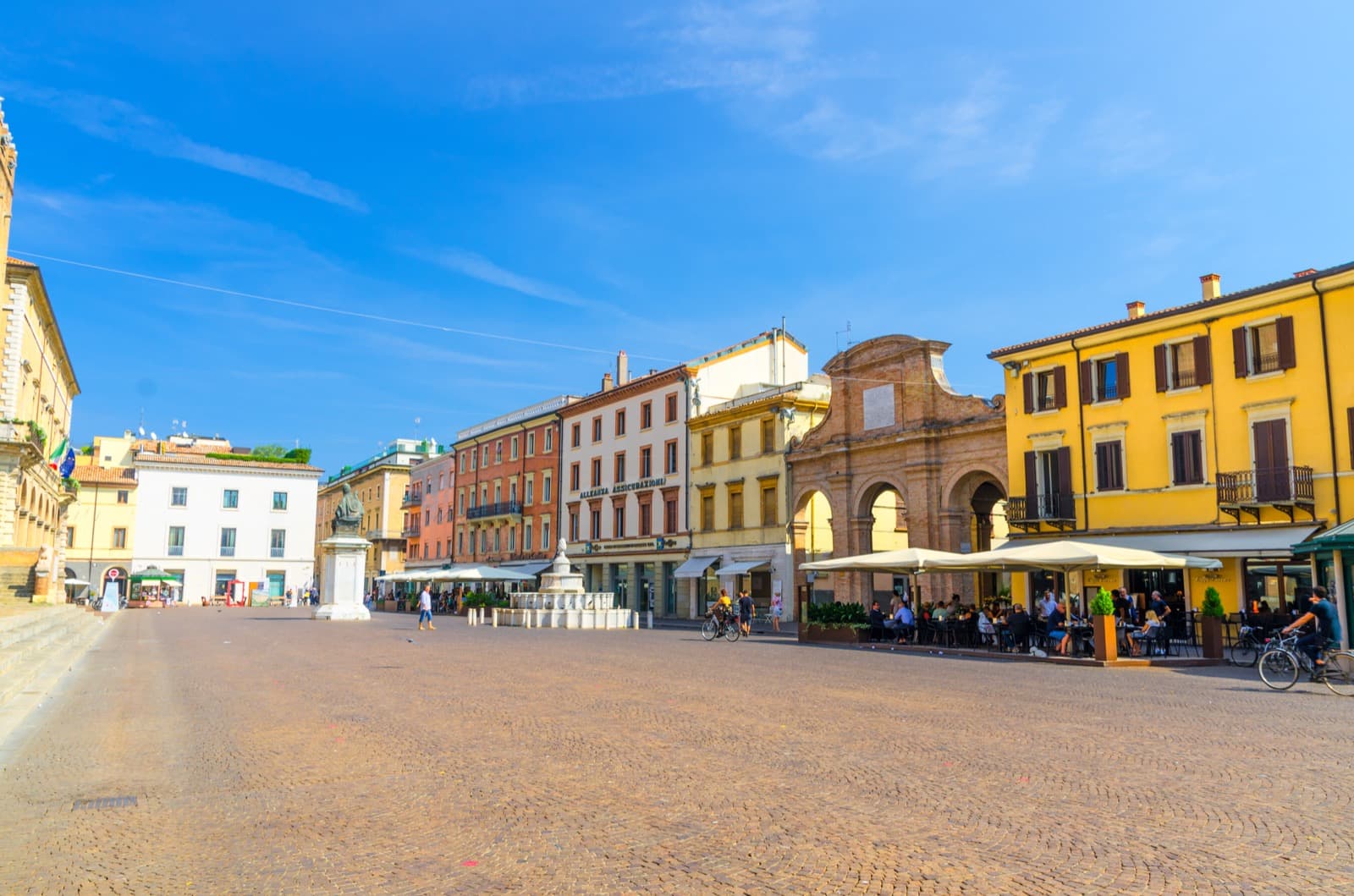
Just behind the Galli Theater, the itinerary continues with a visit to the Fellini Museum, a place born to tell the cultural heritage of one of the most illustrious directors of the Twentieth Century, in a composite, narrative path that can fascinate the whole family.
The Fellini Museum is a widespread museum made up of 3 places: Castel Sismondo, which is the Rocca Malatestiana of Rimini, the Malatesta Square, and the Cinema Fulgor, the cinema frequented by Fellini when he was a child (later evoked in some of his movies such as “Amarcord” and “Roma”).
Also not to be missed with kids is the statue of the rhinoceros in Piazzetta San Martino, a tribute to the film “E la nave va”.
Rinoceronte Piazza San Martino
Fellini Museum, Rimini Ph. Lorenzo Burlando
Fellini Museum, Rimini Ph. Lorenzo Burlando
Fellini Museum, Rimini Ph. Lorenzo Burlando
Day 2 – Santarcangelo di Romagna and surroundings
The second day is dedicated to the hinterland and its countless villages rich in history and fascinating views. Among them we have selected three that we believe are suitable for arousing the curiosity of children as well.
The village of Santarcangelo di Romagna
Santarcangelo di Romagna is a delightful, typical village of Romagna, located just 10km from Rimini. Its historic center is characterized by noble palaces, village houses, alleys, and small squares.
Not to be missed in town:
- a tour in Piazza Ganganelli with the Pine-Cone Fountain, restored in 2014 on a project by Tonino Guerra (one of the 4 fountains linked to this Italian poet in the village), the plaque bearing one of his most famous poem called “La Farfalla”, and the Triumphal Arch, to which a curious legend is linked;
- a walk through the picturesque alleys, up to the Rocca Malatestiana (about 10 minutes on foot from the square);
- a visit to the tuffaceous caves under the small hill of Monte Giovo, to discover the magic of the underground Santarcangelo (the caves are accessible by reservation);
- a stop at the Stamperia Artigiana Marchi, one of the oldest workshops in Romagna where the traditional rust prints on fabric are still made today. Inside it, there is still today the ancient mangle, unique in the world, still used for ironing fabrics.
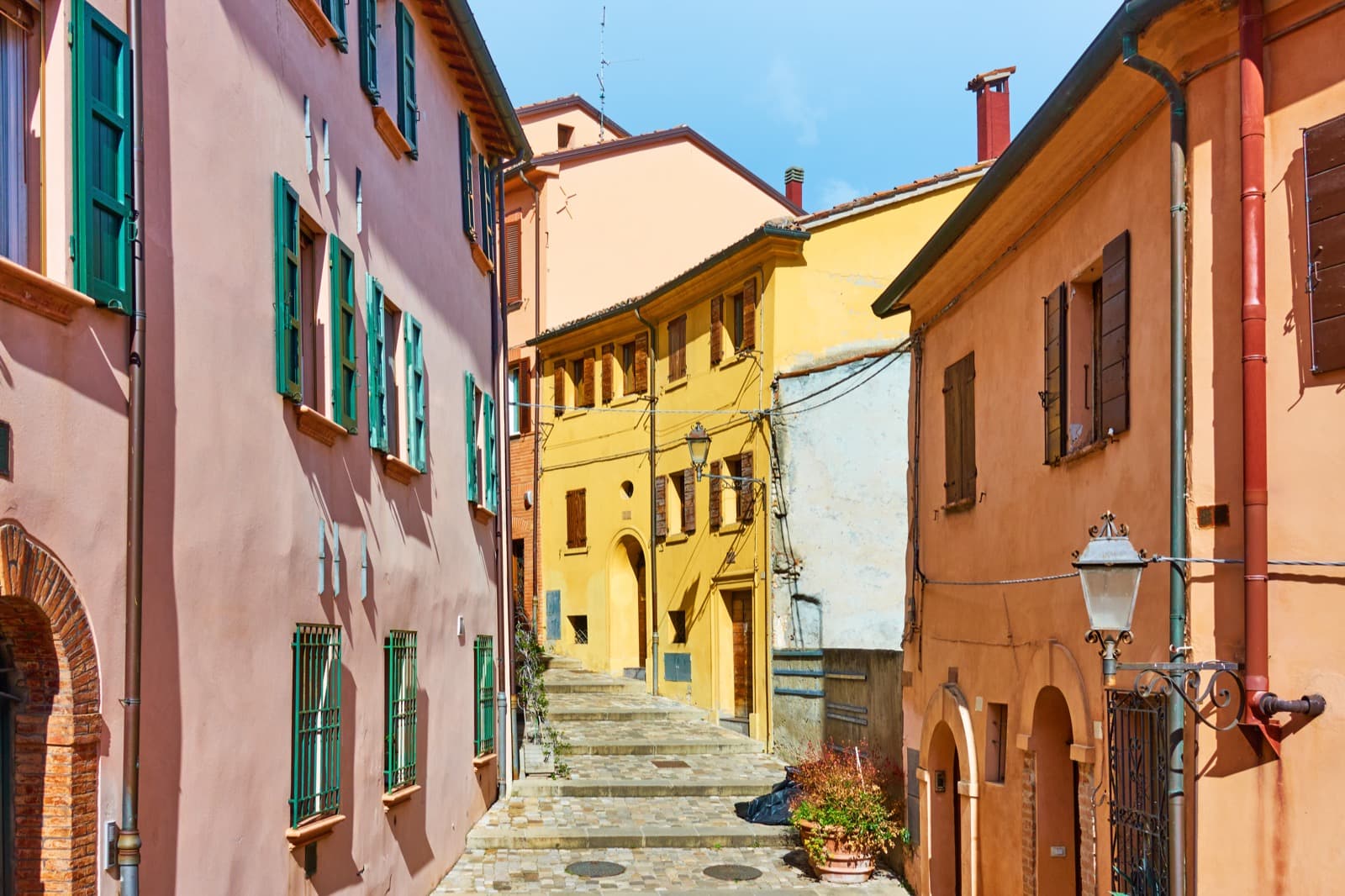
The village of Verucchio
The itinerary continues through the Valmarecchia to reach (about 13km from Santarcangelo) the village of Verucchio, recognized as one of the most beautiful villages in Italy and a TCI Orange Flag village.
A visit to Verucchio allows you to discover the Malatesta dynasty and its ancient glory, which is still witnessed by the imposing Rocca del Sasso, one of the largest and best-preserved Malatesta fortifications.
Built at the behest of Sigismondo Malatesta in 1449, thanks to its perched position, the castle offers a truly evocative panorama that ranges from the Adriatic to the highest peaks of the Apennine ridge.
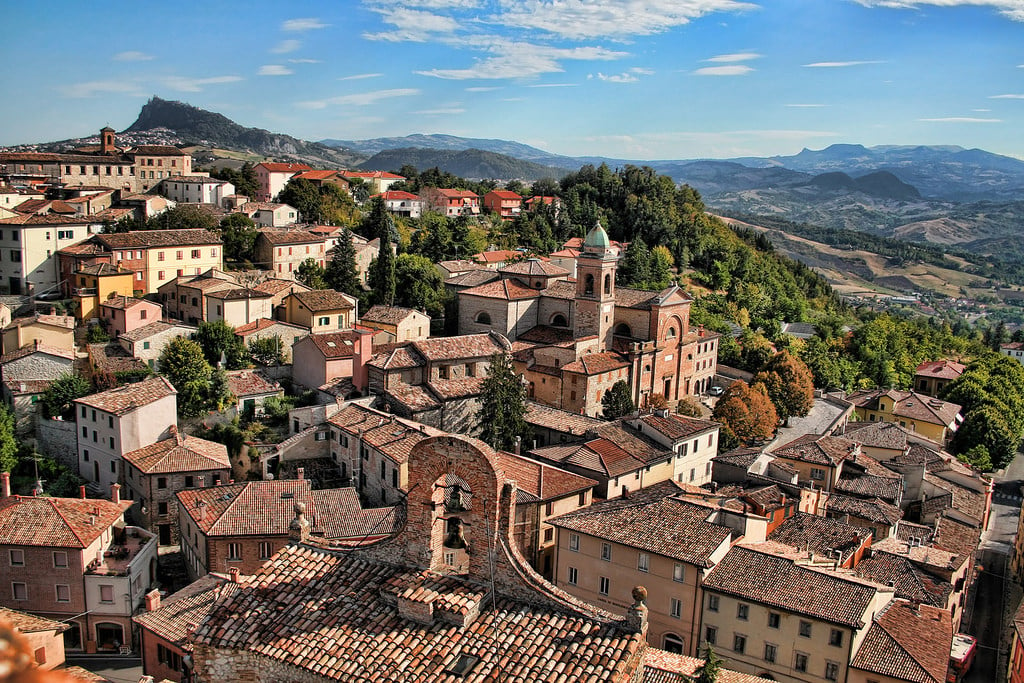
The village of San Leo
The last stop of the day is the ancient fortified village of San Leo (about 17km from Verucchio), which stands on a huge rock in a dominant position over the Marecchia Valley.
Among the most beautiful villages in Italy and TCI Orange Flag village, San Leo has its roots in history, as evidenced by its Pieve di Santa Maria Assunta – the oldest building not only in San Leo but in the whole territory of the Montefeltro, built in the Carolingian era and modernized in the Romanesque age – and the nearby Cathedral dating back to 1173 and dedicated to San Leone, founder of the city.
But the most fascinating monument of the village for children is the Fortress, which stands imposingly on an impregnable rocky spur, whose history is closely linked to the last vicissitudes of the life of the Count of Cagliostro.
An enigmatic alchemist, Cagliostro was imprisoned here and died in a cell with no doors (into which he was lowered through a trapdoor in the ceiling) and lit only by a small crack in the wall.
Inside the fortress, there is also a rich display of weapons and instruments of torture, which document the historical and social phenomenon of the Inquisition.
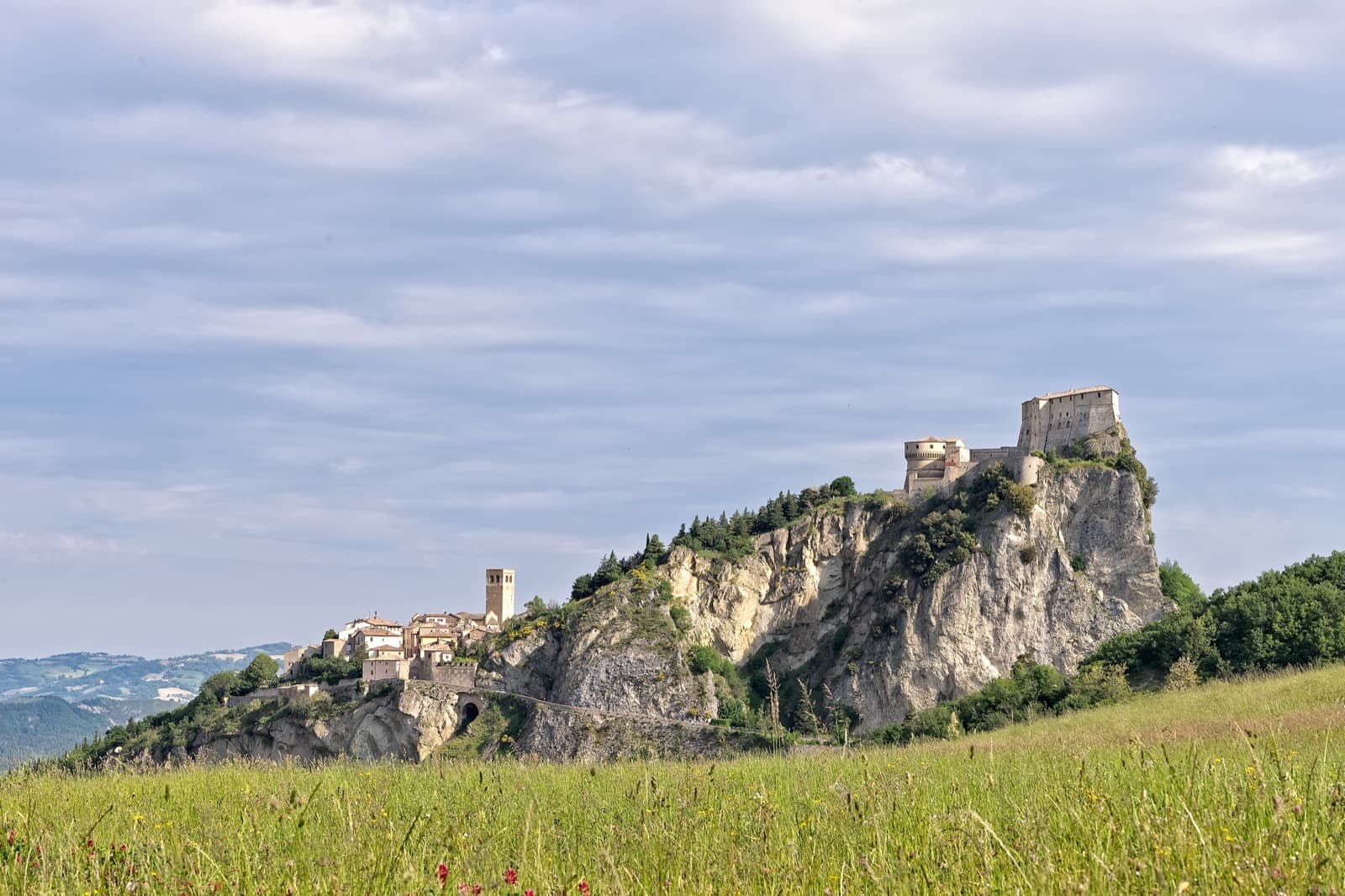
Onferno Caves
If you have some extra time left or if you want an alternative to visiting the historic villages, we recommend going to the Onferno Caves Nature Reserve, a karst complex of considerable naturalistic value about 30km from Rimini which houses the most important colony of bats in the region.
To find out the opening hours and organize your visit, just consult the Facebook page.
Author
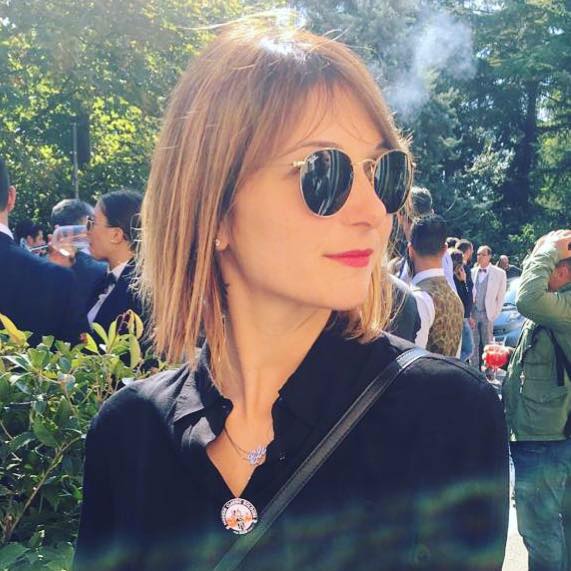
Elisa Mazzini
Social Media Manager for @inEmiliaRomagna and full-time mom.
You may also like
Rimini in 3 minutes: Best Things to Do and See
by Davide Marino /// November 30, 2017
Mysteries and legends of Rimini and surroundings
by Elisa Mazzini /// September 21, 2018

Interested in our newsletter?
Every first of the month, an email (in Italian) with selected contents and upcoming events.
Santarcangelo di Romagna: a wonderful little village in Emilia-Romagna
by Davide Marino /// December 6, 2019
The village of Verucchio: from the Etruscans to the Malatesta Family
by Arturo Castellini /// October 12, 2017

